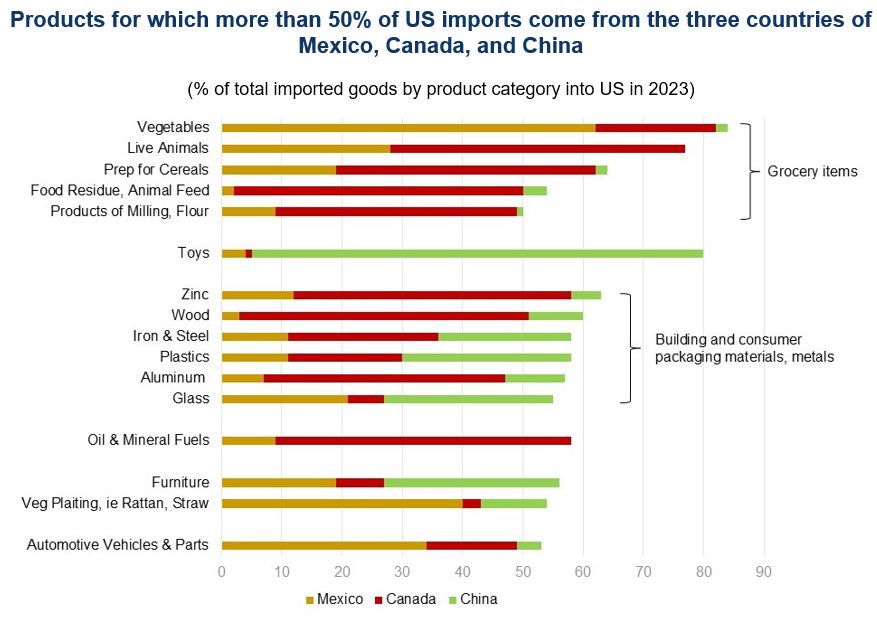
As the White House negotiates with Mexico over tariffs of up to 25%, the cost of food should be a top consideration. Cost of food in the crosshairs: Tariffs on Mexico will result in US importers paying higher prices for large shares of the vegetables, fruit and even meat consumed by those in the US. The US imports 59% of the fresh fruit and 35% of the fresh vegetables consumed, according to the US Department of Agriculture. In 2023, Mexico and Canada supplied 51% and 2%, respectively, of US fresh fruit imports, and 69% and 20%, respectively, of US fresh vegetable imports in terms of value (see chart below). Imports of live animals, used for meat production, are also largely sourced from Mexico (28%) and Canada (49%). The TCB take: Given the recent talk of the “price of eggs” and consumers’ focus on kitchen-table economic concerns, the impact of price hikes on grocery items deserves careful consideration. Supply-chains for perishable goods and live animals are complex and not easily modified or replaced with substitutions from economies at further geographic distances. 
Robust Q3 GDP: Finding a Signal in the Noise
December 23, 2025
Fed Doves Get Nice Holiday Gift as CPI Inflation Drops
December 18, 2025
FOMC Decision: Do Three Dissents Mean a January Pause?
December 10, 2025
Fed December Decision: Not So Clear Cut
December 09, 2025
September Inflation Pause Bodes Well for Fed Cut
December 05, 2025
September Retail Sales Show Consumers Taking a Breather
November 25, 2025
Charts
The proliferation of easy-to-use generative AI requires that policymakers and business leaders each play an important role.
LEARN MORECharts
A hyperpolarized environment, diminished trust in our nation’s leaders.
LEARN MOREIN THE NEWS
Denise Dahlhoff on How CEOs Are Talking About Tariffs—without Saying “Tarif…
May 21, 2025
IN THE NEWS
Erin McLaughlin on Tariff Policy
April 07, 2025
IN THE NEWS
Erin McLaughlin on Reshoring Factors
April 05, 2025
IN THE NEWS
Erin McLaughlin on US Reshoring
April 02, 2025
IN THE NEWS
Erin McLaughlin: How policy uncertainty may exacerbate infrastructure chall…
March 19, 2025
IN THE NEWS
Erin McLaughlin discusses the latest on tariff policy
March 14, 2025
